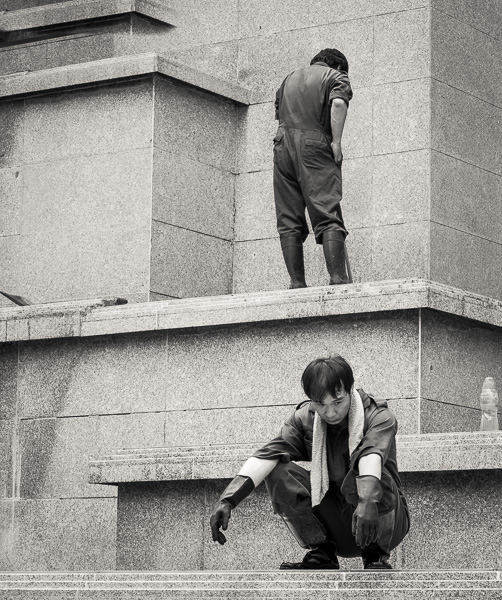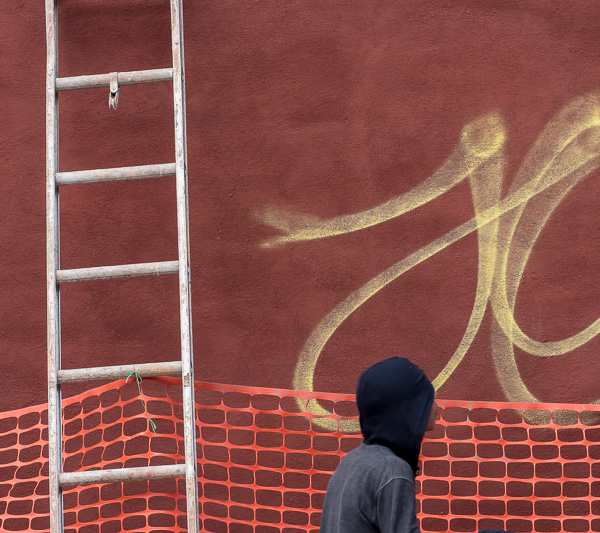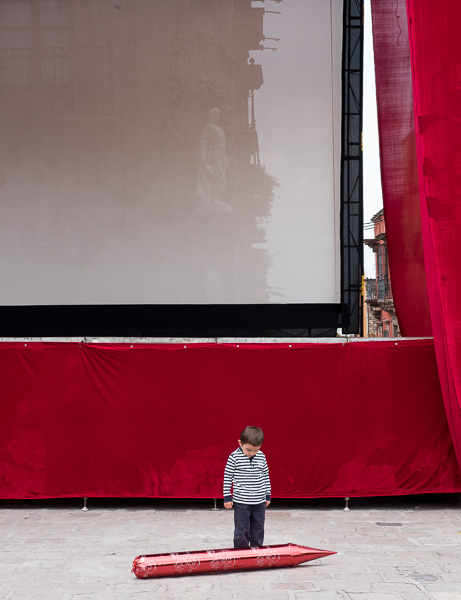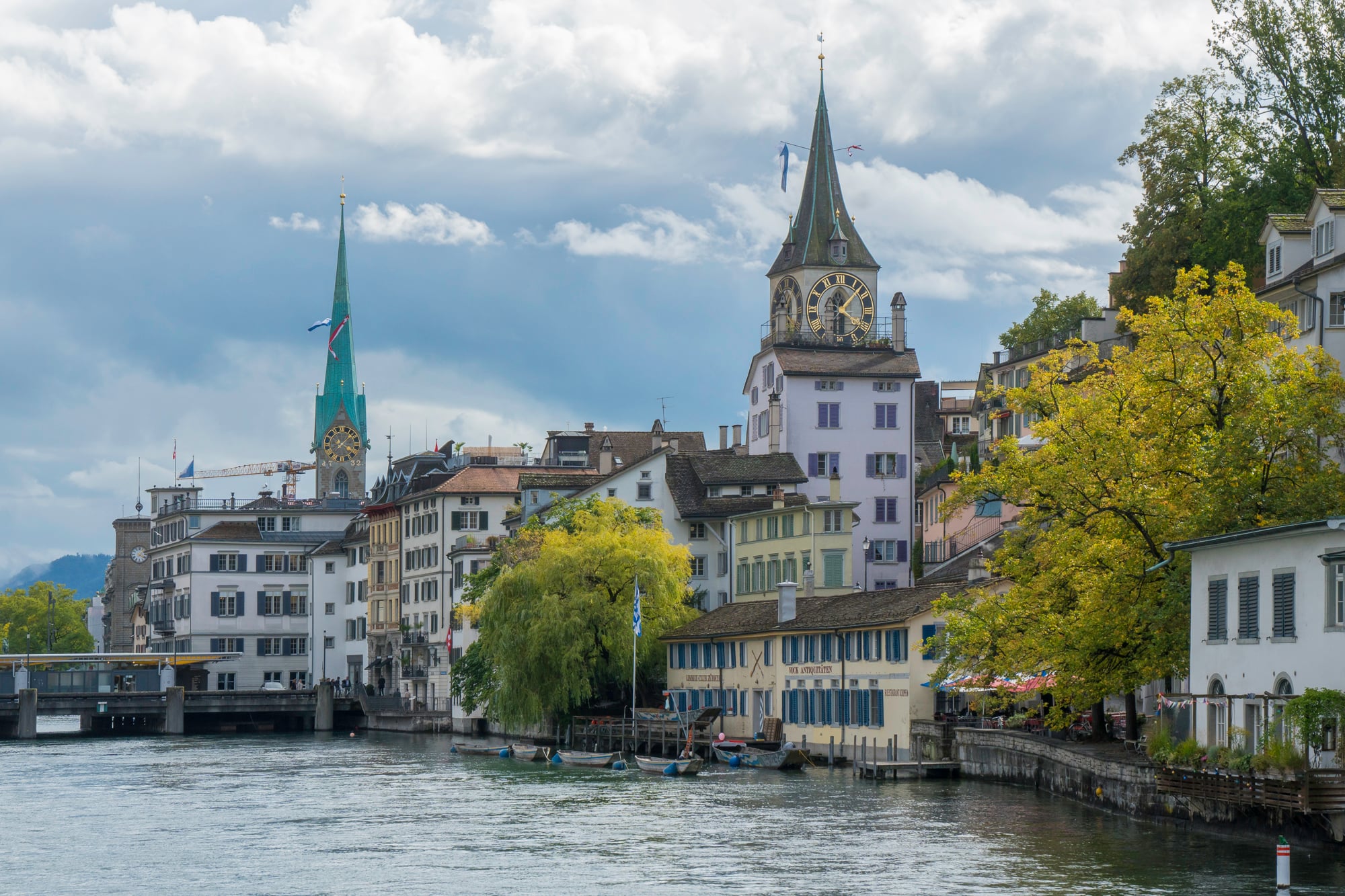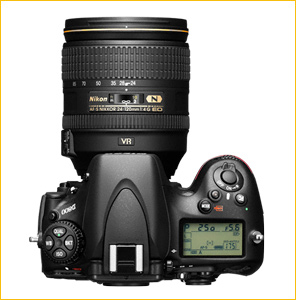
As a long term Nikon DSLR user having used a D3x for about 3 years, I would lie if I wrote that my photography has been significantly limited by equipment. The D3x remains a brilliant imaging device usable in a wide variety of situations but particularly at ease in landscape work thanks to its rugged design, sharp sensor and above average DR.
Why a D800?
As a current happy D3x user, why upgrade to a D800? Is there any good reason besides the forgivable desire to own the latest toy in town?
On the function side, the D3x feels a bit dates compared to the D800:
-
-
It is heavier and bulkier,
- Its live view works as a perfect focusing tool, but feels a bit dated,
- Its auto ISO works very well when shooting moving subjects but is not well suited for general photography with zoom lenses,
- There is a mechanical link between the mirror and the shutter of the D3x. This means that it is not possible, even in MLU or live view mode, to take 2 images in a row without mirror movement, the D800 should have improved on this… more below,
- Its TFT screen tends to fog when shooting in wet conditions and the fog never really goes totally away,
- It is not officially compatible with Eye-wifi cards (no in camera menu to control card activation),
- It doesn’t have a quiet shooting mode,
- It doesn’t have video nor an HDMI output,
- It doesn’t have a built-in flash,
- It doesn’t provide any in camera HDR which is mildly annoying in some cases,
- Its sheer price makes you think twice before taking it to some risky locales,
- A second D3x for back up is an expensive investment,
-

D800 + Zeiss 50mm f2.0 Makro – handheld
Now, what I am going to lose?
-
-
Some battery life, probably significantly so in cold weather,
- Some ruggedness and fall resistance,
- Possibly some degree of weather proofness although Nikon claims the contrary,
- Full time display of ISO value on the rear side of the body,
- Possibly some handheld sharpness because of the lighter body,
- Some ego points.
-

D800 + Nikkor AF-S 85mm f.4 – handheld

100% zoom view of the above near frame edge (f4.0 – 1/250s)
Out of those, the reduction of the battery life in cold weather might be the main issue but I may have to wait until later this year to figure out for sure.
On the performance side:
-
-
More resolution is always welcome if it doesn’t come at the cost of low ISO noise (meaning DR),
- Gaining 1 to 2 quality stops at ISO 3200 would come handy in a variety of real life situations.
- The 4+ years newer AF of the D800 should help with the focusing issues I have been experimenting with some bright lenses like the 24mm f1.4 or 85mm f1.4 on both the D3x and D7000,
- Auto-ISO should be listed once again here in some situations since it will make it possible to shoot a significantly lower ISO values when working with a zoom lens.
-

D800 + Leica 180 f2.8 APO on Gitzo GT5531s
Why Not a D800E?
Some may wonder why I decided to select the D800 instead of the D800E. There are a variety of reasons, some being more valid than others:
-
-
Performance: Ibelievethat the actual gap in sharpness will be fairly small after proper sharpening is applied but fear that checking images for moiré might be time consuming. Although landscape will represent 80% of my applications, I see the D800 as a generic purpose camera.
- Timing: for private reasons the one month gap helps,
- Cost: more cash to invest in other equipment,
-
Working With The Beast
OK, enough intro, as rolling reviews go, there is no firm plan but this first installment will focus on casual shooting with a few lenses I like. I have been shooting with the D800 on and off for a few days and decided to focus this part on a summary of my main findings so far.
In the hand of a Nikon shooter
The body feels very good in my hand and build quality sits somewhere halfway between the D3x and the D7000.
It took less than 10 minutes to configure the D800 with the settings I typically use with my Nikon bodies. Among those:
-
-
Dual back up to memory cards, typically with raws on both cards. Slight change this time around as I intend to try using a EyeFi card to make it possible to share images through my iPhone, I have therefore configured the SD card as jpg small/low quality (2MB files),
- Easy exposure compensation with rear control wheel to apply exposure compensation,
- Auto-ISO with minimal shutter speed favoring higher speeds beyond the inverse of the actual lens focal length,
- Focus with AF-ON only (shutter doesn’t trigger focusing),
- Central joystick to jump to medium/high magnification in Live View and Replay modes, essential to confirm critical sharpness,
- Usage of Fn button to activate virtual horizon in viewfinder.
-

D800 + AF-S 24mm f1.4 handheld
Key first findings after a few days of shooting…
On the plus side:
-
-
I like the camera!
- Pretty amazing all rounder,
- Great image quality, in the same ballpark as the D3x at pixel level at low ISO… but with 1.5 times as many of those. DR is what I expected it to be. Clearly much superior at high ISO,
- Very clear viewfinder makes decent (if not critical) manual focus possible. The VF seems superior to what I remember of the D3x and is clearly superior to the D7000,
- Mirror damping seems excellent and hand held shooting is fairly easy, but the sound made by the mirror has a less robust feel than that of the D3x,
- Live view is a bit of a mixed bag, but it is overall clearly improved compared to the implementation of the D3x. There is at least one new issues that may impact its usability for some applications. Live view is important enough that I devoted a special section to the topic below.
- Very accurate auto-focus and focusing aid with all the lenses I tried (AF-S 24 f1.4, 35mm f2.0, AF-S 85 f1.4, AF-S 70-300 f4-5.6 VR),
- The easy activation of auto-ISO by ISO button + front wheel is very convenient,
- No problem using the 24mm PCE on the D800,
- It seems to work pretty well with the 70-300 f4-5.6 VR although the gap in sharpness compared to top primes is obviously there. I am therefore not sure that the doomsday discussions about how demanding on lenses the camera is really applies,
-

D800 + AF-S 85mm f1.4 on Gitzo GT5531s
On the Minus Side:
-
- At least one aspect of live view could have been implemented better (see below),
- Predictably, battery life feels much shorter than with the D3x even in mild weather. That is at least the case when using Live View extensively. A fair test would of course require the usage of the battery pack using larger capacity batteries,
- The default exposure with the mirror in place seems a bit hot. This being said, the slight under-rating of the ISO of the D800 helps LR recover blown highlights so that I don’t consider this as a real issue for now. It is worth noticing that the exposure in live view mode tends to under-expose a bit more,
- The new auto-iso is so close to perfection that having more explicit control on the speed bias in auto mode would have been even better. I feel that it may be going for a bit too high speeds – to be confirmed,
- The 2 axis level sensor is nice, but the non illuminated display in the viewfinder is hard to see in low light situations. I guess it can be said that it doesn’t intrude in daylight situations.

D800 + AF-S 85mm f1.4 on Gitzo GT5531s
Special About Live View
Live view has become an essential feature for photographers looking at tapping reliably into the resolution potential of their sensor. The D3x was an OK performer, how does the D800 fare?
Well pretty well overall.
-
-
Live view seems much more usable with wide glass than it was on the D3x where it was very difficult to assess the impact of small adjustments of focus. That includes the 24 mm PC-E,
- It is now possible to focus anywhere in the frame while D3x limited this capability to, roughly, the DX part of the frame,
- AF in live view is decently fast(er) and very accurate,
- Live view seems to be using the aperture set on the camera, whatever the exposure mode used. As far as I recall, the live view display of the D3x behaved differently in that it was always using the widest aperture of the lens. The manual is a bit unclear on this topic so I am not sure whether the current behavior is the expected one (both in Japanese and English).
-
Using the actual aperture allows for DoF preview and prevents any issue with focus shift, so it is overall good. But the D800 obviously has to compensate the smaller apertures with higher gain to maintain luminosity. This sometimes results in a pretty noisy video stream in low light situations (dusk or dawn shooting) which can make critical focusing challenging. Being able to jump to full lens aperture with one single action would help, but I have not found an easy way to do this. The by-pass is of course to change the aperture manually.

D800 + AF-S 85mm f1.4 on Gitzo GT5531s
-
- A biggie for me… the only one really… it takes too long to get the hand back after taking one image with live view (4-5 sec). This is basically going to make live view unusable for some panorama shooting.
It is of course possible to focus in live view, move back to viewfinder and start shooting which used to be the typical D3x workflow for pano shooting. This approach extends battery life, is very workable and is easier to perform compared to the D3x thanks to the dedicated live view button.
The problem is that it makes it impossible to benefit from one D800 improvement I had high hopes for, which is the lack of mirror return between images in live view. This would have reduced the vibrations between images and enabled a faster pace of panoramic shooting. It seems that these hopes were a bit misplaced.

D800 + Leica 180 f2.8 APO on Gitzo GT5531s
Closing Word
So all in all… the first days spent with the D800 don’t disappoint! I have found very few weaknesses so far and a lot to like.
This is obviously just the beginning of a long story…
Since my RRS L bracket just arrived yesterday, I intend to focus next on pano shooting, eyefi experiences, HDR tests, bits of video and more… stay tuned!
April, 2012
Bernard Languillier is a landscape photographer based in Tokyo, Japan.
Some of his work can be seen online at www.light-of-earths.com
Read this story and all the best stories on The Luminous Landscape
The author has made this story available to Luminous Landscape members only. Upgrade to get instant access to this story and other benefits available only to members.
Why choose us?
Luminous-Landscape is a membership site. Our website contains over 5300 articles on almost every topic, camera, lens and printer you can imagine. Our membership model is simple, just $2 a month ($24.00 USD a year). This $24 gains you access to a wealth of information including all our past and future video tutorials on such topics as Lightroom, Capture One, Printing, file management and dozens of interviews and travel videos.
- New Articles every few days
- All original content found nowhere else on the web
- No Pop Up Google Sense ads – Our advertisers are photo related
- Download/stream video to any device
- NEW videos monthly
- Top well-known photographer contributors
- Posts from industry leaders
- Speciality Photography Workshops
- Mobile device scalable
- Exclusive video interviews
- Special vendor offers for members
- Hands On Product reviews
- FREE – User Forum. One of the most read user forums on the internet
- Access to our community Buy and Sell pages; for members only.








